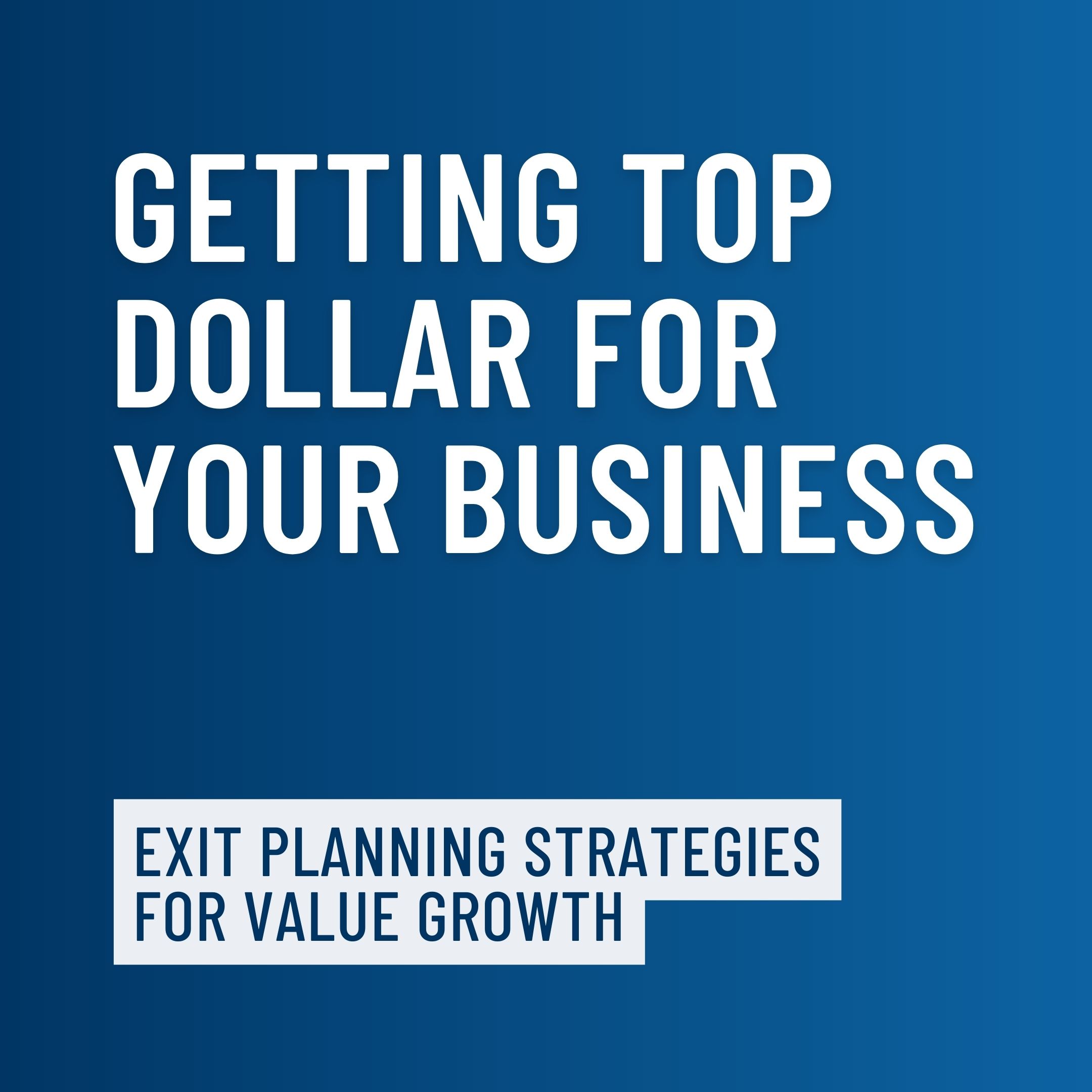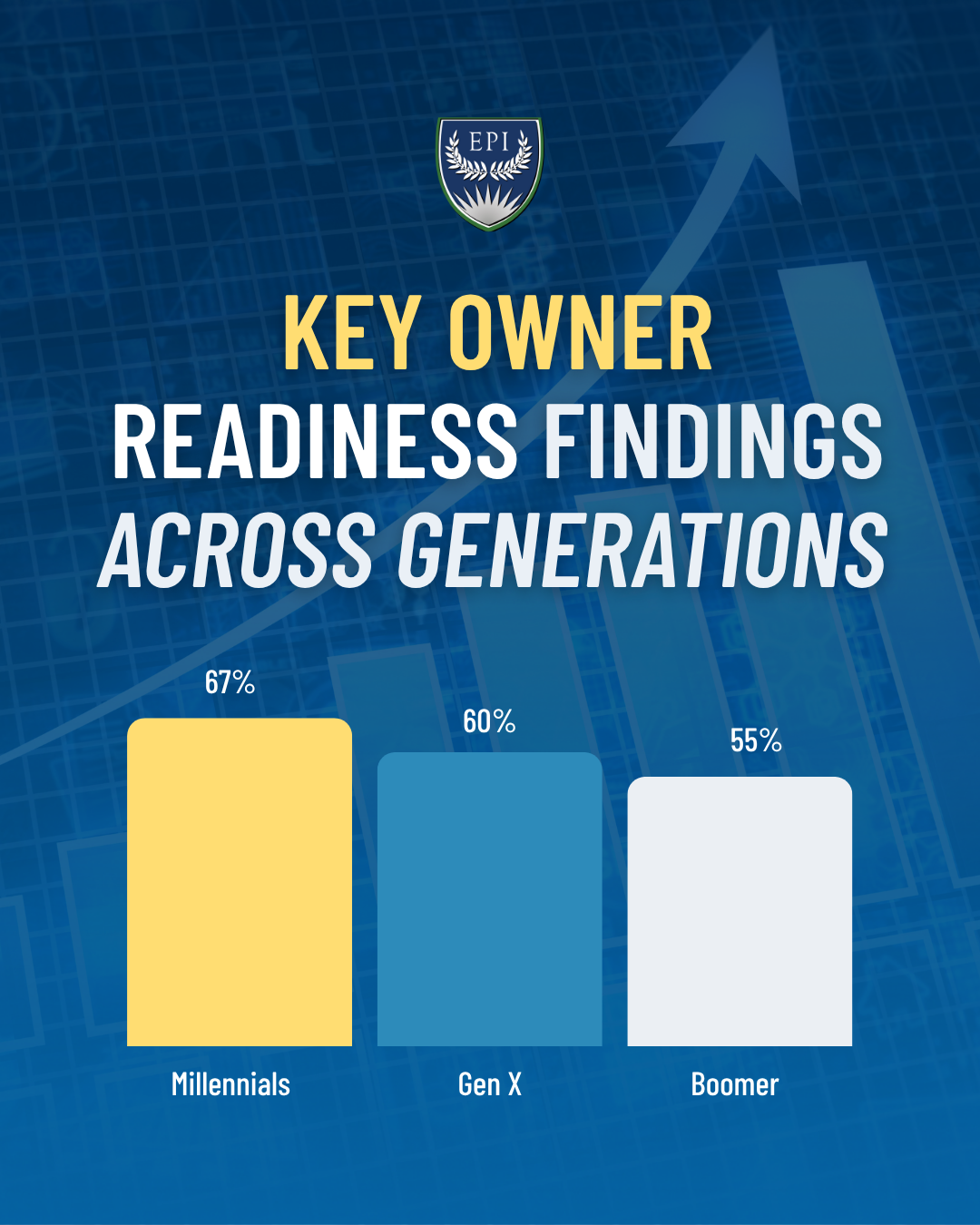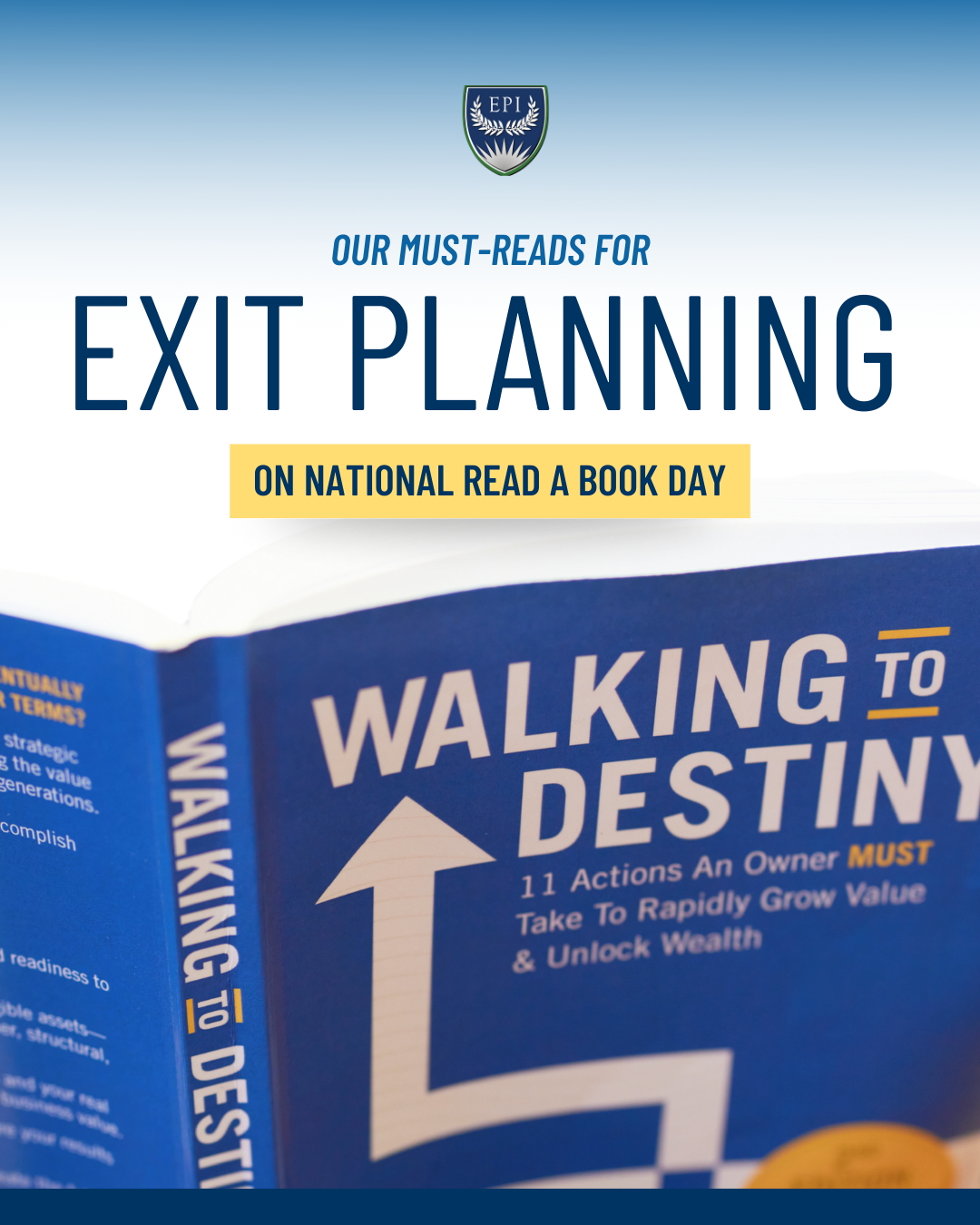
THE EXIT PLANNING BLOG
Keep up-to-date with exit planning, succession planning, industry trends, unique specialty insights, and useful content for professional advisors and business owners.
Share this
National Dollar Day: Getting Top Dollar for Your Business
by Colleen Kowalski on August 8, 2023

What are you doing in your business to ensure you receive “Top Dollar” for your company and assets during a sale? Have you thought about any value-enhancing measures that can be made in your organization? Are you implementing new processes and documenting standard operating procedures?
Today is National Dollar Day. This national day honors the creation of the monetary system in the United States of America on this day in 1786. See how you can get top dollar for your business during a sale in honor of National Dollar Day!
Follow the Value Acceleration Methodology
The Value Acceleration Methodology is the backbone of exit planning. This framework focuses on aligning an owner’s business, personal, and financial goals equally. All three elements build upon each other, thus moving us from very successful business owners to very significant business owners. This Methodology is broken into three gates: the Discover, Prepare, and Decide Gates.
The Value Acceleration Methodology combines the plan, concept, effort, and process into a clear strategy to build a business that is both valuable and transferable. Chris Snider shares, “Value acceleration actions require tireless commitment and relentless execution. Exit planning is simply good business strategy integrated with your personal and financial goals and objectives.”
The Discover Gate
The first gate of the Value Acceleration Methodology, the Discover Gate, includes three key components. These are a Business Valuation, an Assessment of Owner Needs, and the Creation of a Prioritized Action Plan. These components collectively act as a Triggering Event to begin the owner’s exit planning process.
Creating and maintaining updated Personal Financial Plans, estate plans, and tax plans are important for one’s personal financial strategy and mitigation of personal financial risk. Through this assessment, owners determine their attractiveness and readiness for a business exit.
The Prepare Gate
By the time an owner gets to gate two of the Value Acceleration Methodology, they have established their vision for their company. They have a plan put together and action items to complete to build value in their organizations. The Prepare Gate is about executing those action items. Chris Snider writes in Walking to Destiny, “Delivering action is about focus, reinforcement, and accountability. One of the keys is moderation; do not overload yourself or your team. Take big projects and break them down into 90-day incremental deliverables.”
During the Prepare Gate, business owners and advisors work to strengthen the business values and mitigate risks by making strategic improvements. These actions serve as proof that value-building systems are in place and help owners reach their desired personal, business, and personal financial goals.
The Decide Gate
The aspect that makes the Value Acceleration Methodology a novel strategy in the exit planning field is the owner’s ability to decide their path. Between the Prepare and Decide gates is a decision diamond that makes a gateway or a path, into the Decide Gate. The question a business owner must ask themselves at that time is, “Do I Keep Growing or Sell?” The owner must ask themselves every 90 days, “Grow or Sell?” If the answer is to grow, then they continue in the Prepare Gate and they continue their 90-day cycles. Every year business advisors conduct a triggering event engagement to understand an owner’s progress. From there, they go back into the 90-day sprints.
If the answer is to sell, business owners move into the Decide Gate and get to work in the transition of their company.
Learn more about the Value Acceleration Methodology in our whitepaper, From Successful to Significant: The Framework for a High-Value Business Transition.
Understand the Five Stages of Value Maturity
The Five Stages of Value Maturity is one of the core concepts of the Value Acceleration Methodology. In its simplest form, it shows the five stages a business owner must take to successfully grow and harvest the value in their company so they can manage it for a lifetime. Following these five stages will allow a business owner to embrace and integrate the Value Acceleration Methodology into their company. Thus, taking their company from annual year-over-year success to a significant company that is attractive and ready to be sold.
Identify
Roughly 80-90% of your net worth is locked in your business. In order to maximize your value, you must set up a system to determine the value hidden in your business. Conducting an annual business valuation will help determine what factors to focus on in the interest of accelerating the value of your business. A valuation highlights areas of risk, shows what improvements have been made to the business, and most importantly, helps ensure the business owner’s goals are being met.
Protect
After identifying your baseline business value, you must protect that value by mitigating any risks associated with it. It is in this stage of the Five Stages of Value Maturity that business owners and advisors create a prioritized action plan to organize risks. Risks are divided into three categories: personal, financial, and business.
Build
Once you have protected your existing value, your focus can expand to building value. There are two ways to build value: increase your cash flow (EBITDA) and improve your multiple. Your multiple is the number assigned by the private capital market to the value of your tangible and intangible assets and their associated risks. Intangible assets include Human, Structural, Customer, and Social Capital. Improving your intangible capital is critical to building business value.
Harvest
After building your business value, it is time to harvest the fruits of your labor. There are numerous paths your business exit can take. You should invest in an investment banker and business advisor to get the most value out of your exit. You might discover that after reviewing your options, you decide not to sell your business and instead transition the company to a son or daughter, sell the real estate and keep the company, or continue to build value.
The problem owners face when it comes to harvesting the value in their business is their inability to differentiate between enterprise value and net proceeds. Net proceeds is what an owner nets after paying taxes, fees, debts, and any other costs associated with selling their business. So while their business value might be high, they will almost never end up with the full value of the business.
Manage
Manage Value is the last stage of Value Maturity, but that’s not because it comes at the end after you harvest. It’s last because it represents full maturity. You most likely manage value throughout the course of your business lifecycle. However, the most important time to do so is while exiting your business. To achieve the most value, you must manage not only your business value but your personal and personal financial value as well. One of the most essential components in the Manage stage is the management of an owner’s business value and the wealth acquired from the sale of their business in their next act.
Learn more about the Five Stages of Value Maturity in our whitepaper, Understanding Your Business Value: Utilizing the Five Stages of Value Maturity to Ready Businesses (and Business Owners) for an Exit.
Share this
- Blog (544)
- CEPA (419)
- exit planning (249)
- CEPA community (187)
- Business Owner (169)
- Exit Planning Summit (95)
- EPI Chapter Network (89)
- Value Acceleration Methodology (79)
- Exit Planning Partner Network (76)
- EPI Announcement (49)
- Content (48)
- Webinars (37)
- Excellence in Exit Planning Awards (33)
- Marketing (30)
- 2024 Exit Planning Summit (28)
- 5 Stages of Value Maturity (26)
- Books (24)
- EPI Academy (24)
- EPI Team (22)
- Exit Planning Teams (22)
- Leadership (21)
- 2023 Exit Planning Summit (20)
- family business (20)
- women in business (19)
- Intangible Capital (18)
- Exit Options (17)
- Black Friday (16)
- CPA (15)
- Walking to Destiny (15)
- State of Owner Readiness (14)
- Chapters (13)
- Chris Snider (12)
- National Accounts (12)
- Small business (12)
- charitable intent (12)
- personal planning (12)
- Financial Advisors (11)
- Season of Deals (9)
- 5 Ds (8)
- About us (8)
- Podcast (8)
- Insiders Bash (7)
- Scott Snider (7)
- Christmas (6)
- Exit Planning Content Library (6)
- Case Studies (5)
- Owner Roundtables (5)
- Value Advisors (5)
- financial planning (5)
- Awards (4)
- Circle of Excellence (4)
- Exit & Succession (4)
- Five Ds (4)
- Three Legs of the Stool (4)
- executive training (4)
- Owners Forum (3)
- author (3)
- forbes (3)
- DriveValue (2)
- EPI Thought Leadership Council (2)
- Exit Is Now Podcast (2)
- Peter Christman (2)
- Veteran (2)
- Whitepapers (2)
- Business Owners Forum (1)
- SOOR (1)
- business consultants (1)






